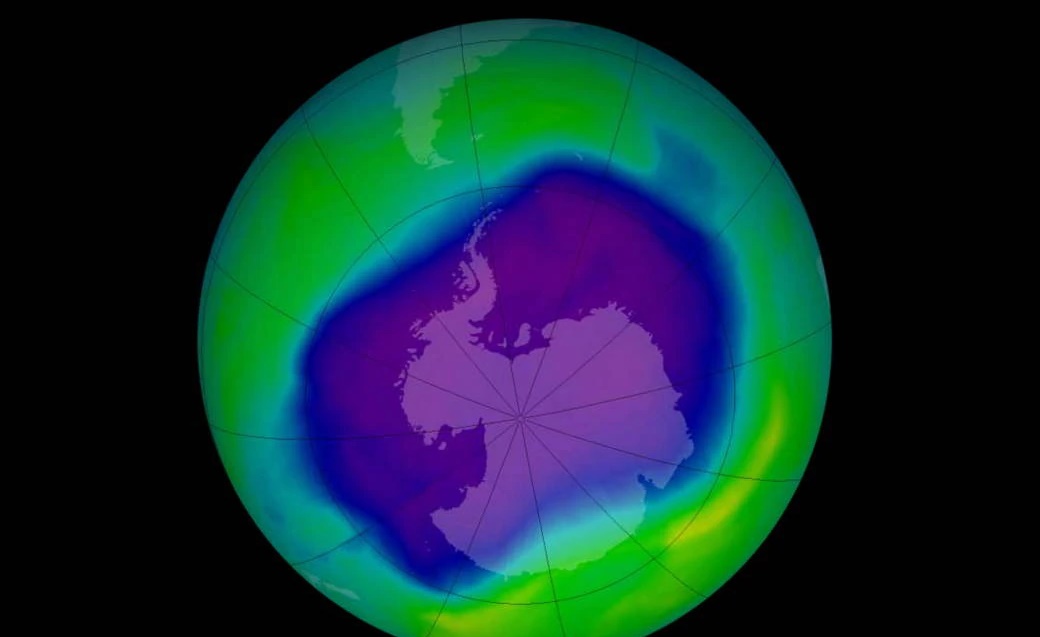The ozone hole could be completely closed in 40 years
In the 1980s, the hole in the ozone layer was one of the big issues in the environmental movement, but over time the issue receded into the background.

Now there is good news: Experts assume that the ozone hole could be closed by 2066. What is this assumption based on and what is the current status of the ozone hole…
Everyone knows and fears it: sunburn. It is therefore clear to every child that sunscreen must be applied before sunbathing. Because the rays are dangerous for us humans. And because of what is known as the ozone hole, they are even more dangerous than they already are. But now there is good news: Because the ozone hole could be history in just a few decades.
According to the World Meteorological Organization (WMO), the UN environmental program UNEP and government agencies in the USA and the EU, a complete regeneration of the ozone layer is expected by 2066. The reason for the positive development is the global decline in CFCs. In the currently less affected regions, which also include Germany, the ozone hole is expected to have disappeared completely by 2040, while in the Arctic, which is particularly badly affected, recovery is not expected until the 2060s, reports the “Tagesschau”.
dr Wolfgang Steinbrecht from the German Weather Service has been studying the ozone layer for years and considers this calculation to be realistic. However, he emphasizes to TRAVELBOOK that the year 2066 is not fixed. “We expect that everyone will comply with the Montreal Protocol and that the ozone-depleting substances will slowly disappear,” explains Steinbrecht. Since the discovery of the hole in the ozone layer in the 1980s, most countries have adopted laws with the international Montreal Protocol that ban ozone-depleting substances such as CFCs – including Germany. “Around 2065, the situation should then be similar to around 1984, when an ‘ozone hole’ was first seen,” says Steinbrecht. However, the ozone-depleting substances only completely disappeared after 2100.
What exactly is the ozone hole?
The ozone layer is part of the Earth’s atmosphere and acts like a filter to protect us from the sun’s harmful ultraviolet rays. The term “ozone hole” colloquially describes the phenomenon that the ozone layer is being depleted by man-made chemicals – in particular chlorofluorocarbons (CFCs). There are also places where it has holes or is even missing completely. This is also problematic because since the ozone layer has been weakened, the number of skin cancer cases in the affected regions is increasing.
How dangerous is the ozone hole in Germany and worldwide?
The ozone layer is still thin worldwide and over Germany and, according to Steinbrecht, there are still significant amounts of ozone-depleting substances in the atmosphere. There is a decline, but these substances would only disappear “very, very slowly”. There is currently no acute danger in Germany – although you have to be careful in the period from March to May. Steinbrecher explains why: “Fortunately, we don’t have a pronounced ozone hole in the northern hemisphere. However, there are individual years in which the polar vortex is also very cold and stable over the Arctic. Then a lot of ozone will also be destroyed over the Arctic in spring. The last time this happened was in 2011 and 2020. Endangered regions can then be Northern Europe, Canada, Greenland or Siberia, sometimes even Germany, from the end of March to May when the sun is high enough again.”
As a rule, however, places with generally low-ozone air and high sun are affected. “Usually these are Antarctica and the southern tip of South America in the southern spring (September to early December), more rarely New Zealand, Tasmania or the southernmost part of Australia,” says Steinbrecht. Travelers should therefore be particularly careful here – at least as long as the ozone hole has not yet closed.

